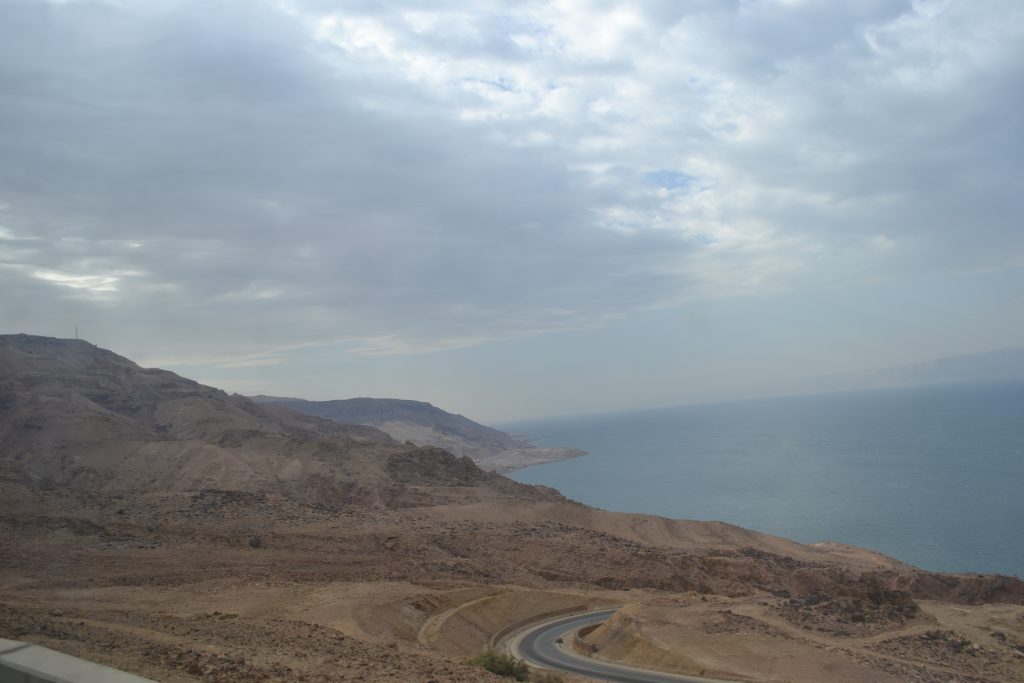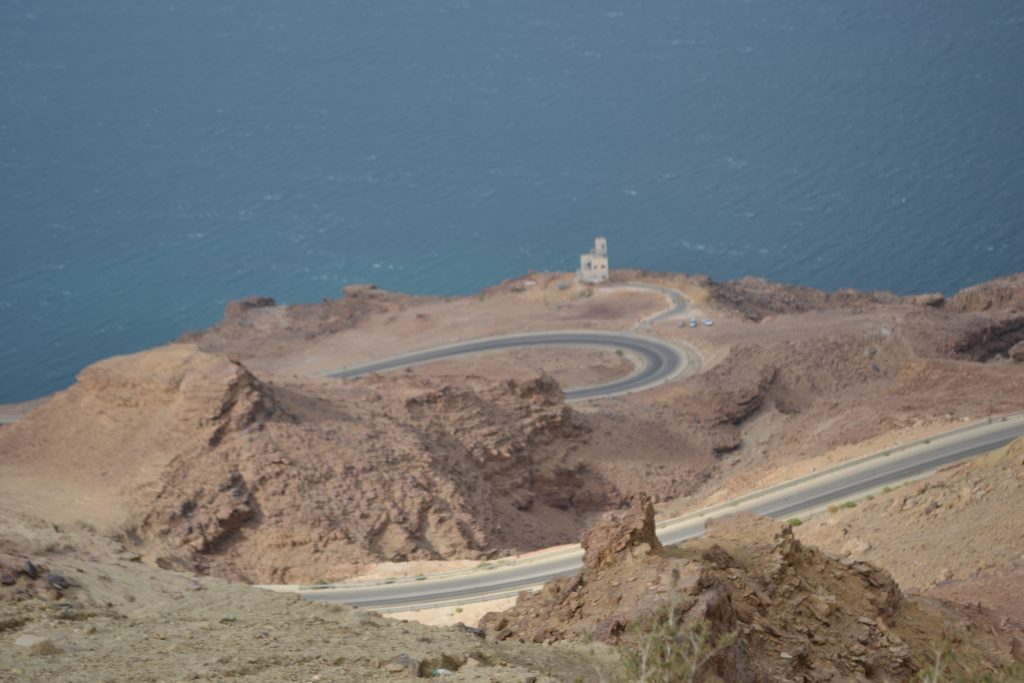
The road to Machaerus, Jordan was difficult. Winding through a desert land with many switchbacks and steep hills, the bus struggled through the twists and turns providing a few scenic glimpses of the Dead Sea in the rear view. The significance of Machaerus, also referred to as the Fortress of Mukawer, was that it was one of the palaces of King Herod the Great. It is most known as the location where John the Baptist was imprisoned and beheaded as recorded in the Bible.
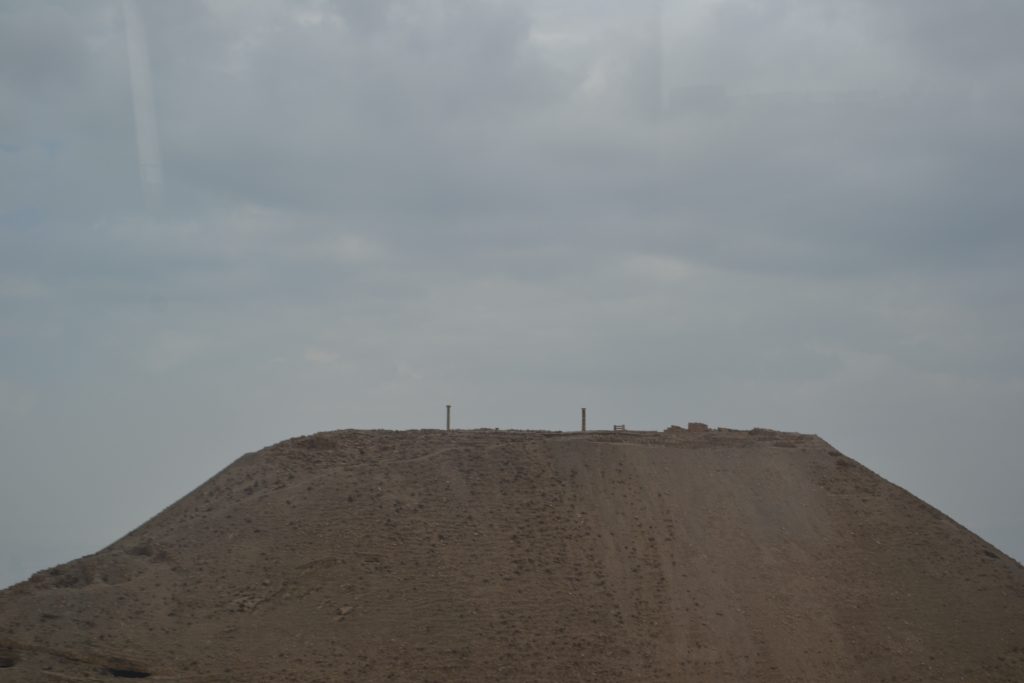
We realized we had reached our location, when in the distance we noticed two solitary columns sitting atop a massive hill. Around the bend, a graveyard, abandoned stone buildings and a Jordanian shepherd with his flock seemed appropriate for visiting one of the most significant locations in biblical history.
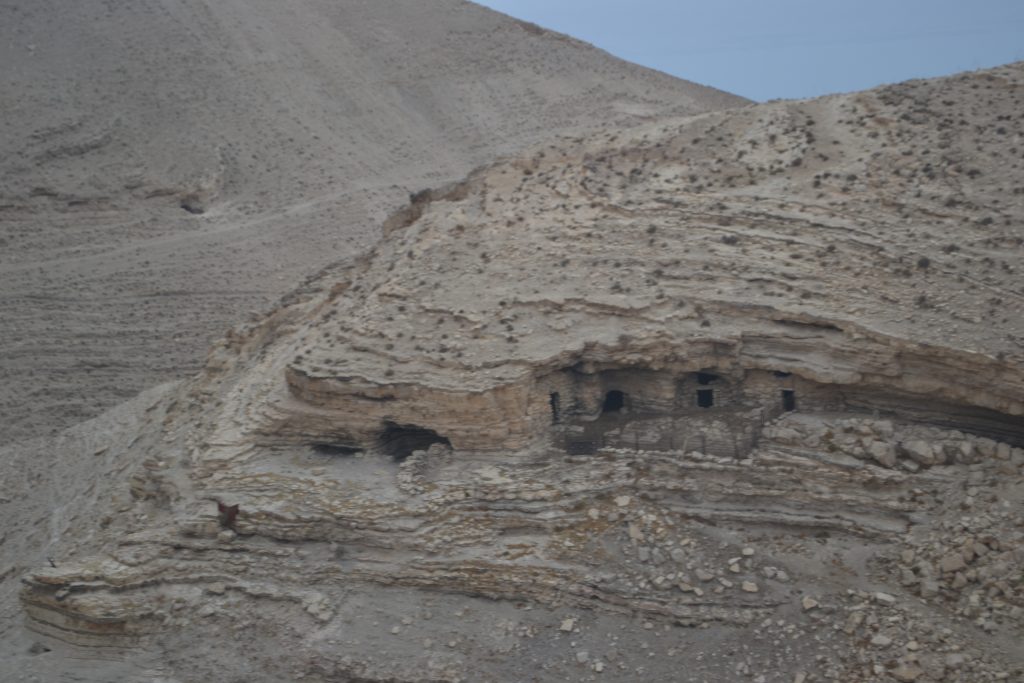
As we arrived at the entrance of Machaerus, we observed several caves that had been cut into the side of the striated rock. Could one of these caves have been the location where John the Baptist had been imprisoned before his execution? Biblical references to John the Baptists’ beheading include Matthew 14: 1 – 12, Mark 6: 14 – 29, and Luke 9: 7 – 9.
Matthew 14: 9 – 11 states “The king (Herod Antipas, son of Herod the Great)…had John beheaded in the prison. 11 His head was brought in on a platter…”
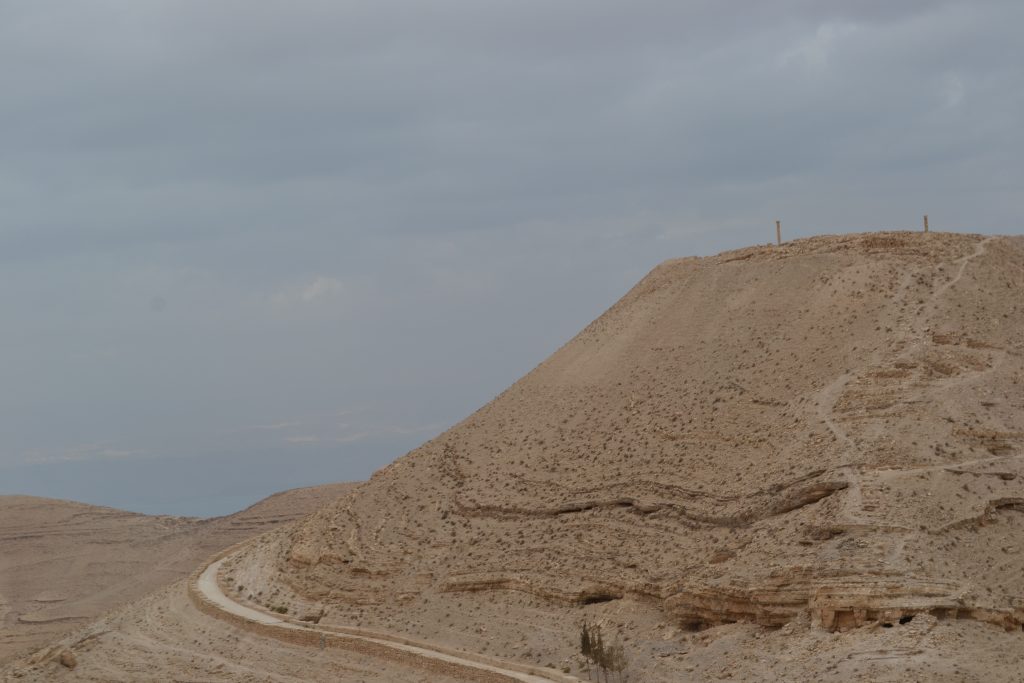
A posted placard identified the site as the Fortress of Mukawer and explained that it was originally built by Hasmonean King, Alexander Jannaeus in the first century BC. Herod the Great, took over the property during his reign in 30 BC and made significant improvements by building a palace inside of the fortress.
Steep stone stairs from the parking lot were a challenge for many on the tour but then the trail slowly inclined along the base of the hill. A final abrupt climb lasted a few short minutes until reaching the archaeological site where we were welcomed with outstanding, surreal views of the Dead Sea.
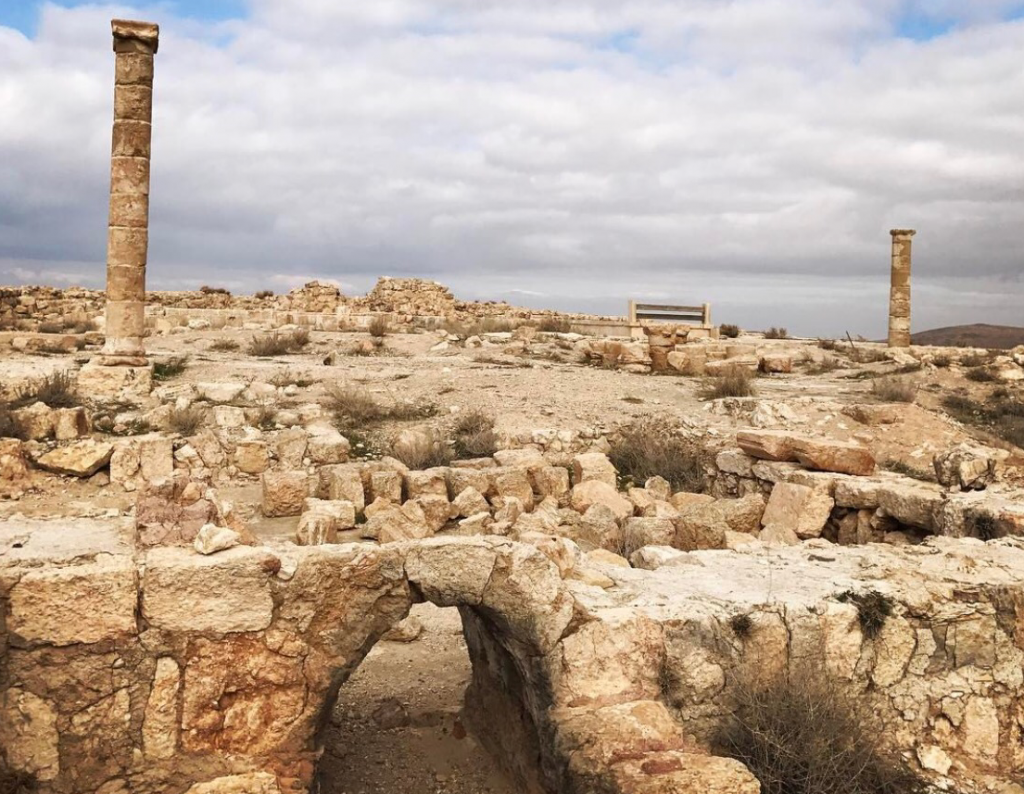
To be honest, the fortress was not half as impressive as Petra or other historical sites when it comes to the identification of the archaeological ruins. What remained of the palace, included the courtyard, some of the rooms, an elegant bath and fragments of the floor mosaic. From the east is an aqueduct which brought water from the cisterns and evidence of towers appear on the eastern slope. One of the two columns left standing is Doric and comes from the royal courtyard, while the Ionic column stood near the royal bathhouse.
And so the story goes, that King Herod Antipas, married to the daughter of a Nabataean King, fell in love with his niece Herodias. Herodias gave King Herod Antipas an ultimatum to divorce his wife and he agreed, imprisoning his lawful spouse. John the Baptist was vocal about his disdain against the actions of King Herod and made it quite known his feelings, calling them a modern day Ahab and Jezebel, at which point the King called for the imprisonment of John.
While Antipas was celebrating his birthday, Herodias’ daughter, Salome performed a dance which pleased Antipas that he granted her whatever she wanted and that he would give it to her. After Salome consults her mother, she asks for John the Baptist’s head. Soon thereafter, his head was presented on a platter and given to Salome, who, in turn, gave it to her mother.
The biblical accounts do not provide the location of Herod’s temple. It was Josephus, the Jewish historian, who identified the location of Machaerus as the place where John the Baptist was beheaded. In his book, the War of the Jews, Josephus gives a detailed account of the palace and its interesting contribution to history.
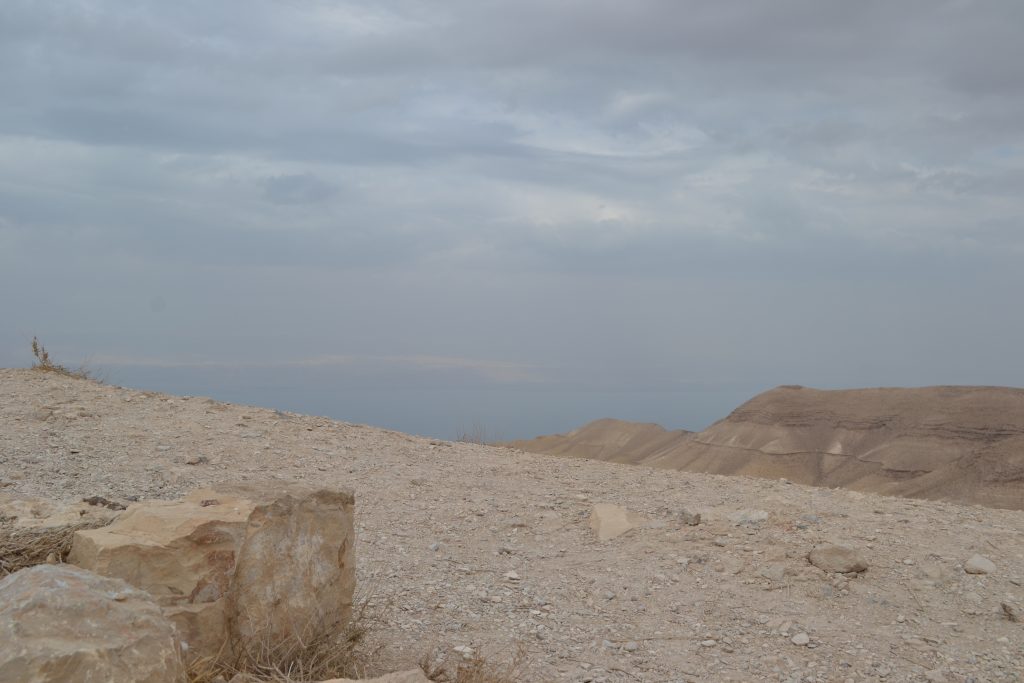
In later years, the Machaerus Palace would play a part in Jewish history during the First Jewish Revolt as a scene of a Roman siege. While there were no signs and references that indicate the location where John the Baptist was beheaded, the glory of the palace is long gone.
Have you visited the site of John the Baptists’ beheading? What were your thoughts and impressions of the site? I would love to hear about your experience and thank you for reading my latest post. Wishing you many Happy Travels!
What to See and What to Do:
Machaerus
Madaba, Jordan
You may require a guide to enter Machaerus. Check with local travel guides and tour companies to learn more about gaining entrance.
Where to Stay:
Crowne Plaza Dead Sea
Ein Bokek, Dead Sea
Telephone: 08 659 1919
This hotel was luxury at its best. Built along the shores of the Dead Sea, the Crowne Plaza offers a wide range of luxury services.
Where to Eat:
Crowne Plaza Dead Sea
Ein Bokek, Dead Sea
Telephone: 08 659 1919
Each night we were provided a vast buffet of options to include local cuisine as well as European selections as well.
What to Eat:
- Falafel are crisp balls made of chickpeas and is a staple street food of Jordan.
- Fattet Hummus is a chickpea based spread which also includes pieces of pita bread, tahini, pine nuts and topped with a generous portion of olive oil.
- Kunafa was one of my favorite desserts from Jordan made of a pastry and stuffed with cheese and syrup.
- Mansaf is Jordan’s national dish. This aromatic meal is served family style and layered beginning with a thin flatbread, rice, meat (camel or goat) then garnished with toasted nuts and yogurt.
- Maqluba was served at our Jordanian local dinner with a Christian family. Our host brought a large pan filled with chicken, rice, potatoes and vegetables and turned the pan upside down on a large plate. One of the tasty spices in this dish is sumac, so I purchased several bags of this spice to bring home.
- Shawarma is a pita bread filled with lamb, chicken or beef.
- Zaarb is traditionally cooked over a campfire. A stew-like meal made of beef and vegetables, it is traditionally cooked in a pit.
What to Read:
- Married to a Bedouin, Marguerite van Geldermalsen
- Leap of Faith, by Queen Noor
- Appointment with Death, by Agatha Christie
- Pillars of Salt, by Fadia Faqir
- The Tower, by Allesandro Gallenzi
- Seven Pillars of Wisdom, by T.E. Lawrence
